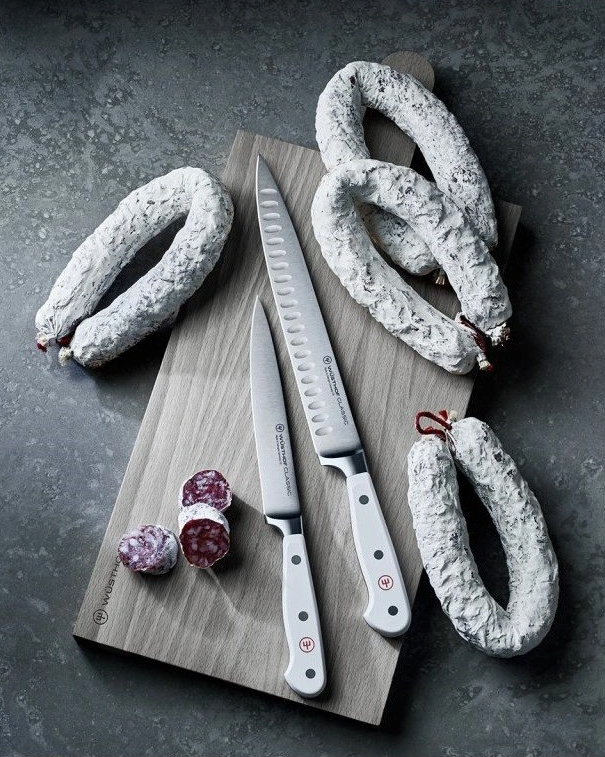If you are a keen cook, a meat knife should not be missing from your kit. It will make your work much easier and improve your cooking experience. We'll introduce you to the different types of meat knives, explain their uses and give you advice on how to choose the best one.
Meat knives are usually made of the highest quality steel to handle large portions of meat and all the associated tasks. Their blades can be long and thin for filleting, strong and curved for boning, very sharp for serving, or sturdy and wide for cutting larger cuts of meat. The ergonomic shape of the handle ensures a comfortable and, above all, safe grip. Each type of knife has its own specific characteristics to increase efficiency and make food preparation or consumption easier.












